Disclosure: This article contains affiliate links. We may earn a commission from purchases at no extra cost to you, which helps our travel content.
The limestone karsts of Vang Vieng rise from the Nam Song River like ancient sentinels, their reflections dancing on the water's surface at dawn. While most travelers know this small Laotian town for its infamous tubing parties, my week here revealed a profoundly different side – one of cultural richness, ecological wonder, and authentic human connection. As someone who's spent decades studying marine ecosystems, I found unexpected parallels between the delicate balance of river life here and the coral communities I've documented across the Pacific.
Trading Tubes for Traditional Homestays
My journey into authentic Vang Vieng began when I abandoned the well-trodden tourist path and arranged a homestay in Ban Phoudindaeng, a small village about 7km from the main town. The Hmong family who welcomed me lived in a traditional wooden stilt house, where three generations shared meals, stories, and daily responsibilities.
My host, Mai, spoke limited English but communicated volumes through her cooking lessons. We rose before dawn to prepare sticky rice in bamboo baskets, the steam carrying aromas of jasmine through the morning air. Using my pocket translator, I learned the Hmong names for ingredients as we prepared laap (minced meat salad) with herbs collected from their garden.
The family's grandmother took particular interest in my work as a marine biologist, showing me how they used similar conservation principles to protect the river's fish populations through seasonal fishing restrictions. These conversations, facilitated by my translator device, revealed sophisticated ecological knowledge passed through generations without formal scientific education.
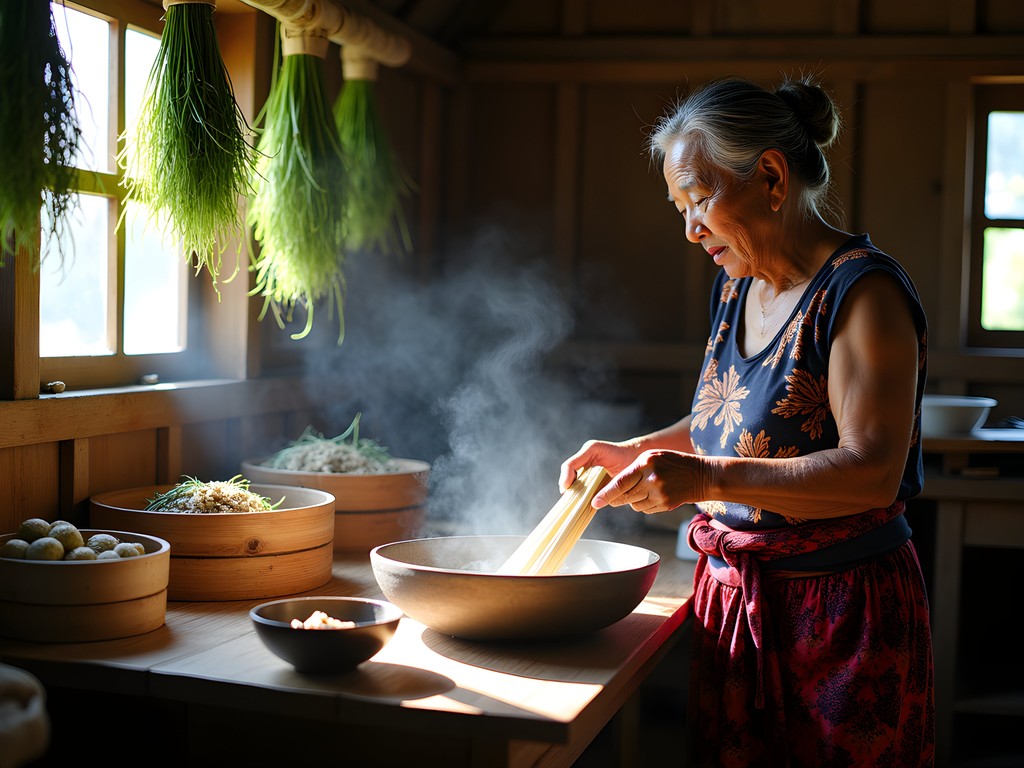
💡 Pro Tips
- Book homestays directly through the Vang Vieng Information Center rather than online platforms for more authentic experiences
- Bring small, thoughtful gifts from your home country for your host family
- Learn basic Lao greetings before arriving—it opens doors to deeper connections
Organic Farming and Sustainable Agriculture
My scientific background drew me to the Organic Mulberry Farm, a community-based agricultural project about 5km north of town. What began as simple curiosity evolved into three unforgettable days of hands-on farming experience that challenged my understanding of sustainable food systems.
The farm operates on principles remarkably similar to marine permaculture systems I've studied—everything interconnected, nothing wasted. Mulberry trees provide leaves for silk production, fruits for jams, and shade for other crops. Ducks control pests in the rice paddies while fertilizing the water.
I joined the morning harvest wearing my gardening gloves (which I always pack for impromptu fieldwork) and learned to identify over a dozen edible native plants that have disappeared from commercial agriculture. The farm manager, Seng, explained how traditional Laotian farming techniques are being documented and preserved here as climate change threatens agricultural stability.
The experience culminated in a farm-to-table lunch where we prepared everything we'd harvested. My travel water filter proved unnecessary as the farm's natural filtration system produced water cleaner than what's available in town.
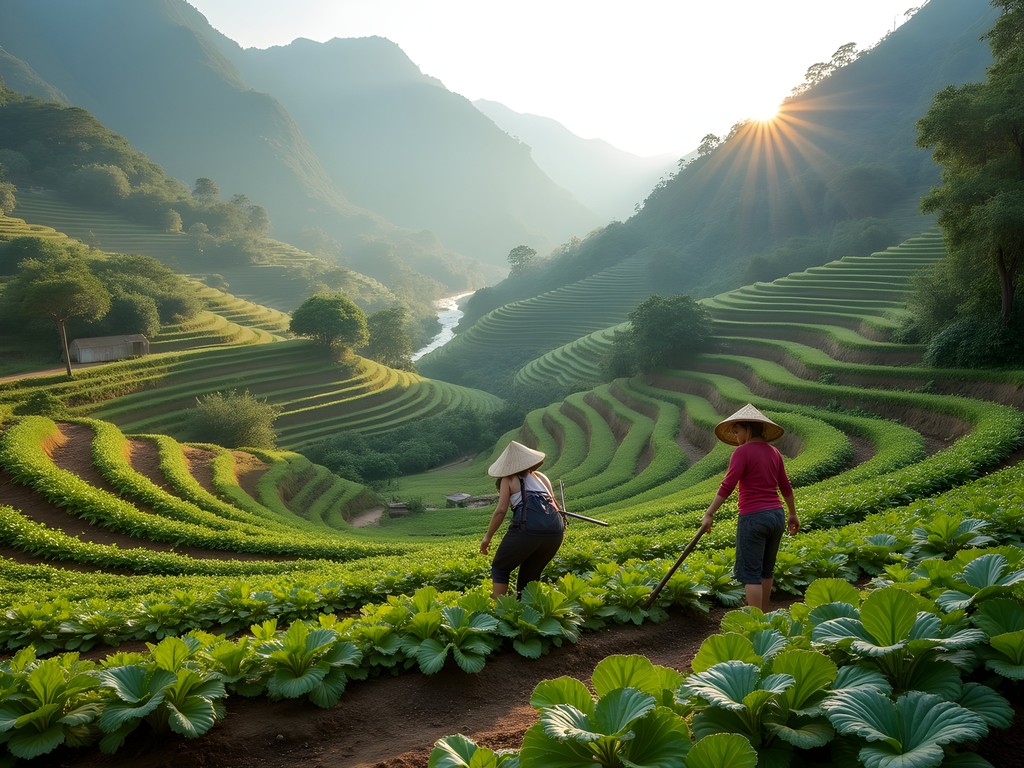
💡 Pro Tips
- Contact the Organic Farm at least two days ahead to arrange a visit—they limit daily visitors to minimize impact
- Wear clothes you don't mind getting dirty and bring a hat for sun protection
- Ask about their seed preservation program—they welcome donations of heirloom seeds from around the world
Village Textile Traditions and Artisan Workshops
As a researcher accustomed to detailed observation, I found myself mesmerized by the precision of Vang Vieng's textile artisans. In Ban Phoudindaeng, I spent two afternoons with a master weaver named Khamla, whose fingers seemed to dance across her traditional loom with the same rhythmic precision that I apply to laboratory work.
Khamla showed me how natural dyes are created from local plants—indigo for blue, jackfruit wood for yellow, and sappan wood for red. The mathematical patterns in traditional Hmong textiles reminded me of the geometric precision found in certain coral formations. I recorded the process using my weatherproof notebook, which has accompanied me through countless field expeditions.
In a neighboring village, I participated in a batik workshop where we used beeswax and bamboo tools to create intricate designs. The instructor explained how these traditional crafts nearly disappeared during years of political upheaval but are now being revitalized as sustainable income sources for village women.
I purchased a handwoven scarf directly from Khamla, learning that it represented over 40 hours of work. The price (120,000 kip, about $12) seemed impossibly low for such craftsmanship, highlighting the economic challenges these artisans face despite their extraordinary skills.
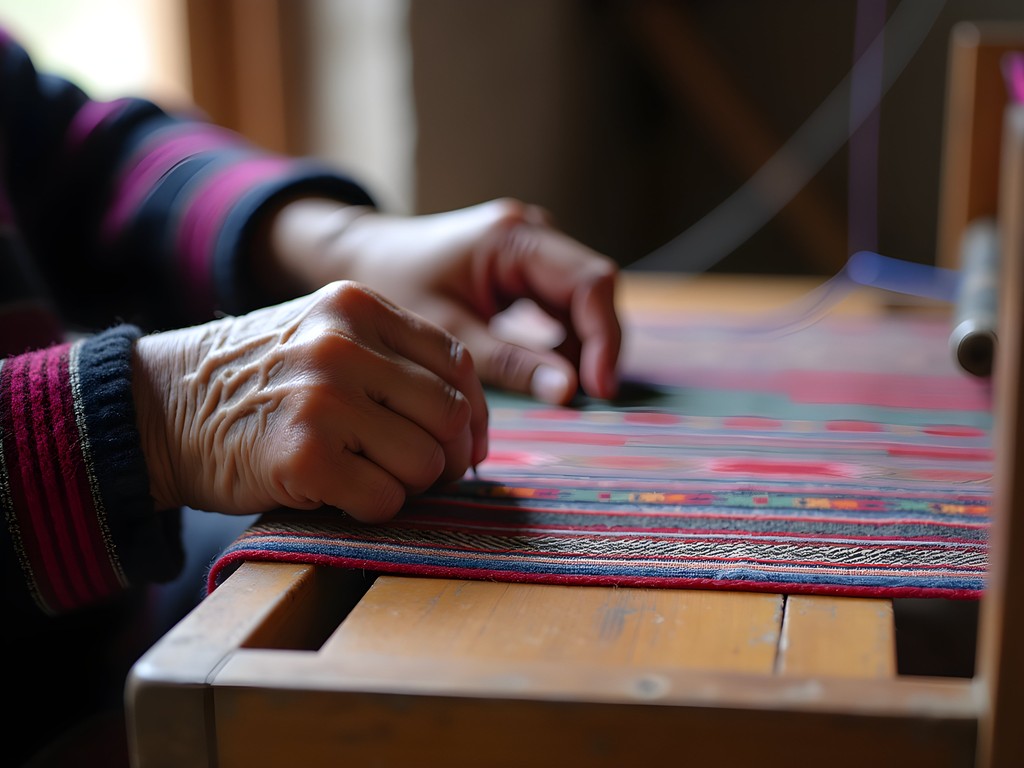
💡 Pro Tips
- Visit villages in the morning when weaving activities are most active
- Ask permission before photographing artisans at work
- Bring small denominations of kip (Lao currency) for purchasing directly from villagers
Cave Temples and Animist Traditions
The limestone karst landscape that defines Vang Vieng isn't just scenically spectacular—it's spiritually significant. With my headlamp secured, I joined a local guide named Bounmy to explore Tham Phu Kham, a cave temple that merges Buddhist iconography with ancient animist beliefs.
As a scientist, I'm trained to observe ecosystems objectively, but there was something undeniably moving about watching elderly villagers make offerings at the cave's Buddha statue, then continuing deeper to leave gifts for the spirits believed to inhabit the limestone formations. Bounmy explained how these dual religious practices coexist peacefully, with many Lao people embracing both belief systems simultaneously.
We ventured beyond the main chamber where tourists typically stop, crawling through a narrow passage to reach a hidden chamber with ancient rock paintings. Bounmy interpreted these images as depicting river spirits—a reminder that people have been forming relationships with this landscape for millennia.
Later, in Ban Na Som village, I was invited to observe a baci ceremony—a traditional Lao ritual involving the tying of white strings around participants' wrists to bind good spirits to the body. The village elder who performed the ceremony explained that it helps maintain harmony between humans and the natural world—a concept that resonates deeply with my own scientific understanding of ecological balance.
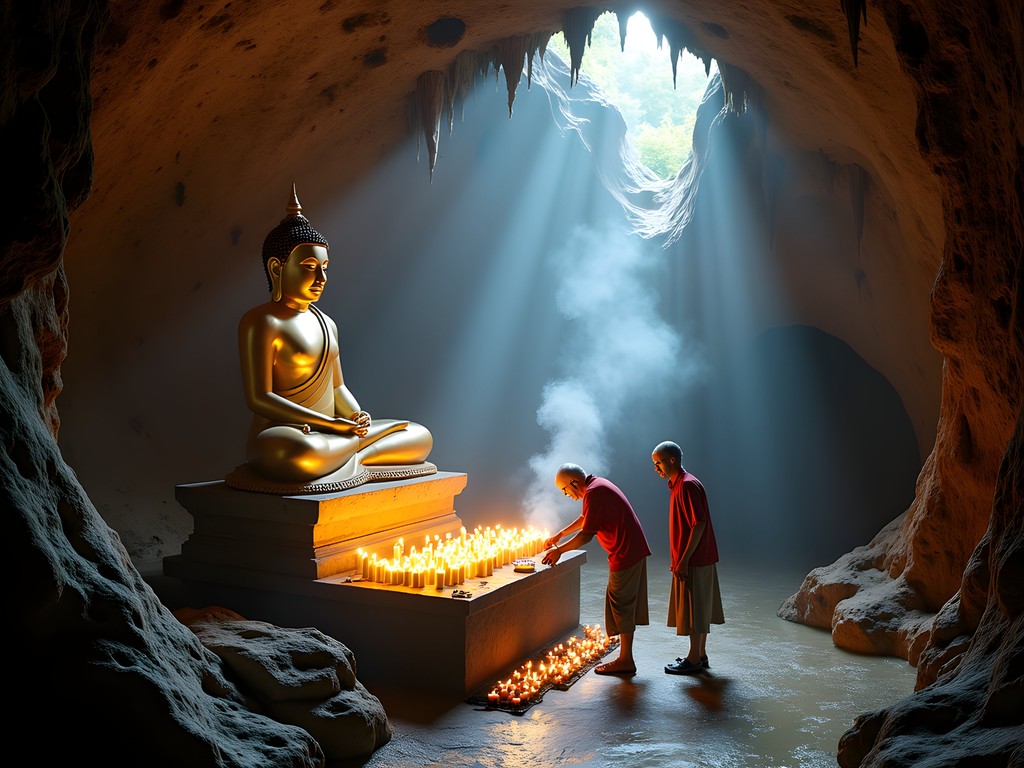
💡 Pro Tips
- Dress modestly when visiting cave temples (shoulders and knees covered)
- Bring your own light source as cave lighting is often minimal or non-existent
- Remove shoes before entering temple areas within caves
Sustainable River Experiences Beyond Tubing
As a marine biologist, I couldn't visit Vang Vieng without exploring its river ecosystem. Rather than joining the party tubing scene, I sought out Lao River Guides, a local company focused on sustainable ecotourism and river conservation.
With guide Sith, I kayaked quiet stretches of the Nam Song River at dawn, when the morning mist clings to the karst formations and local fishermen cast their nets in the shallows. Using my waterproof binoculars, we spotted kingfishers, herons, and even a rare silver-backed needletail swooping over the water.
Sith explained how river conservation efforts are growing in Vang Vieng, with some villages establishing protected zones where fishing is prohibited during spawning seasons. He pointed out native fish species and explained their ecological roles—information that complemented my marine knowledge while highlighting the differences between saltwater and freshwater ecosystems.
We stopped at a riverside organic garden where farmers use traditional methods to prevent soil erosion into the river. The gardener demonstrated how they create natural fertilizers from river plants, maintaining soil health without chemicals that would damage the water quality. I was impressed by how these practices, developed over generations, align with modern sustainable agriculture principles I've studied in academic contexts.
My dry bag kept my field notes protected throughout the journey, allowing me to document these sustainable practices for later reference.

💡 Pro Tips
- Book river experiences with companies that explicitly mention conservation practices
- Morning trips (6-9am) offer the best wildlife viewing opportunities
- Ask guides about seasonal changes in the river ecosystem—each season presents different ecological highlights
Final Thoughts
As my week in Vang Vieng drew to a close, I found myself reflecting on how this place challenges our expectations. What began as a detour on my research trip to Southeast Asian river systems became a profound lesson in cultural resilience and ecological wisdom. The villages surrounding Vang Vieng don't just offer an alternative to the town's party reputation—they represent a more sustainable vision for tourism in Laos.
These communities are preserving traditions while adapting to modern challenges, much like the adaptive strategies I've observed in marine ecosystems throughout my career. By seeking authentic connections with local people and participating in their daily lives, I gained insights no guidebook could provide.
As travelers, we have the power to support these community-based initiatives that protect both cultural heritage and natural environments. The next time someone mentions Vang Vieng, I hope you'll think beyond the tubing and seek out these villages where Laos reveals its true heart. Pack your curiosity, respect, and willingness to step outside your comfort zone—the rewards are immeasurable.
✨ Key Takeaways
- Village homestays offer deeper cultural understanding than any hotel experience
- Traditional ecological knowledge in rural Laos often parallels scientific conservation principles
- Supporting community-based tourism directly benefits local conservation efforts
- The quiet morning hours reveal a completely different Vang Vieng than what most tourists experience
📋 Practical Information
Best Time to Visit
October-November (end of rainy season, lush landscapes with fewer tourists)
Budget Estimate
$25-40/day including homestays, meals and activities
Recommended Duration
5-7 days minimum to experience village life
Difficulty Level
Moderate (Some Village Treks Require Decent Fitness)


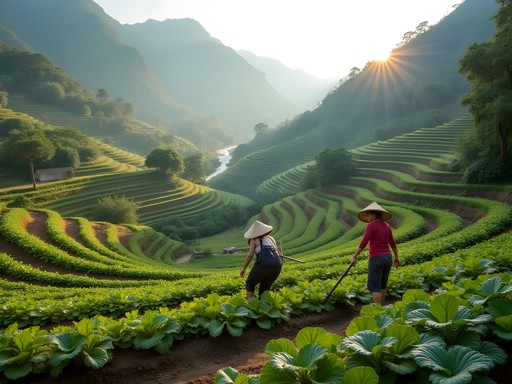
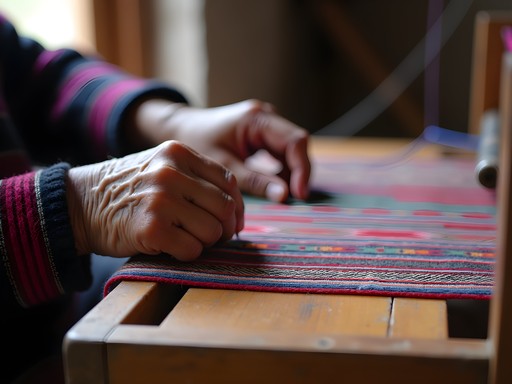
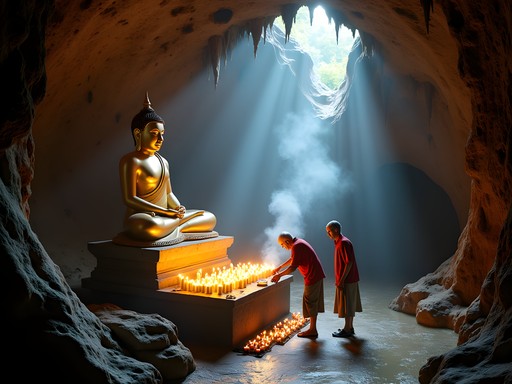
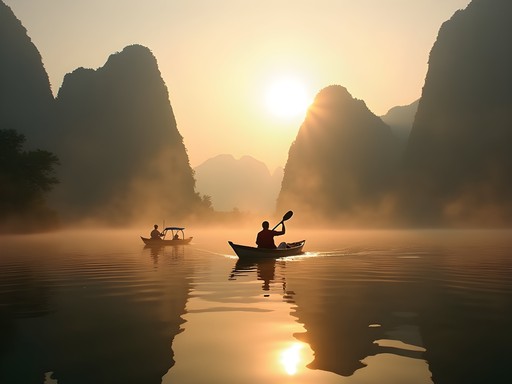










Comments
exploreguy
Great post! How difficult was it to communicate in the villages? My Lao language skills are basically non-existent...
Natalie Mason
In most homestays, at least one family member speaks basic English. For deeper conversations, I used Google Translate (download the Lao language pack before going as signal can be spotty). But honestly, smiles and hand gestures go a long way! The locals are incredibly patient and welcoming.
Claire Hawkins
Reading this brought back such wonderful memories of our family trip to Vang Vieng last year! My kids (8 and 10) were absolutely enchanted by the village experiences. The homestay we did in Ban Phoudindaeng was their favorite part of our entire Southeast Asia journey. Our host family's children taught mine how to fish in the small streams using traditional bamboo traps, while I learned to cook jeow bong with grandma. The genuine connection formed despite language barriers showed them more about Laotian culture than any museum could. For families considering this area - don't hesitate! These villages welcome children with such warmth, and the memories they'll make will last a lifetime.
explorephotographer
Your sunrise shot of the karsts reflecting in the Nam Song is absolutely stunning! What camera setup are you using?
Natalie Mason
Thanks! Just my trusty Sony A7III with the 16-35mm f/2.8 lens. That morning light in Vang Vieng does all the work though!
happyclimber
Did the Phou Kham cave temple trek last month and it was incredible. Pro tip: go early morning (around 7am) to avoid crowds and catch the monks during morning prayers. And bring a headlamp! The one from my headlamp was perfect for exploring the darker chambers where Buddha statues are hidden away from the main areas.
roamfan
Those cave temples look amazing! Added to bucket list.
coolguy
Is it easy to arrange homestays when you're there or should I book ahead? Thinking about spending a week in Laos this summer.
exploreguy
I was there last year and just arranged everything through my guesthouse in town. Super easy and cheaper than booking online. Just make sure you have cash since most villages don't take cards!
coolguy
Thanks for the tip about cash! Definitely good to know.
Sarah Powell
What a refreshing perspective on Vang Vieng, Natalie. I visited back in 2019 and was struck by the dichotomy between the party-centric riverside and the profound cultural richness just a few kilometers away. The textile workshop you mentioned in Ban Naduang was a highlight for me as well - I spent an afternoon learning traditional Hmong dyeing techniques and left with a deeper appreciation for the preservation of these crafts. Did you happen to visit the Organic Mulberry Farm? Their sustainable agriculture model is fascinating, and the silk production process they demonstrate offers valuable insight into local economic development initiatives.
wildwanderer
This is exactly what I needed to read! Going to Vang Vieng next month and was hoping to find something beyond the party scene. Those limestone karsts look incredible!
Natalie Mason
Thanks! You'll love the villages around the karsts. Make sure to visit Ban Phoudindaeng if you can - the views are spectacular and the homestay experience there was my favorite.
wildwanderer
Will definitely add that to my list! How many days would you recommend staying in the area?
Natalie Mason
I'd say 4-5 days minimum if you want to explore the villages properly. The pace is slow, and that's part of the charm!
Fatima Sims
Just returned from Laos last month and spent 4 days in Vang Vieng following a similar path to what you described! The organic farm tour was a highlight - we picked our own vegetables and then learned to make jeow (Lao chili dips) and sticky rice. What really struck me was how the villagers were taking control of their tourism narrative. Our host in Ban Na Thong explained how they're deliberately developing slow tourism that preserves their cultural identity while providing sustainable income. The grandmother there showed us traditional indigo dyeing techniques that have been passed down for generations. If anyone's planning a visit, the rainy season (May-September) means fewer tourists but the landscape is incredibly lush and green - just be prepared for afternoon downpours!
wanderclimber
How did you arrange the homestay? Through a local agency or online?
Natalie Mason
I actually arranged it through the Vang Vieng Information Center in town. They have direct connections with several villages and the money goes straight to the families. Much better than booking through international sites!
Venture X
Premium card with 2X miles, $300 travel credit, Priority Pass